Text
My friend from Lebanon wrote up a really good thread on Twitter I thought I should share here, just to clear up some of the inaccuracies floating around:

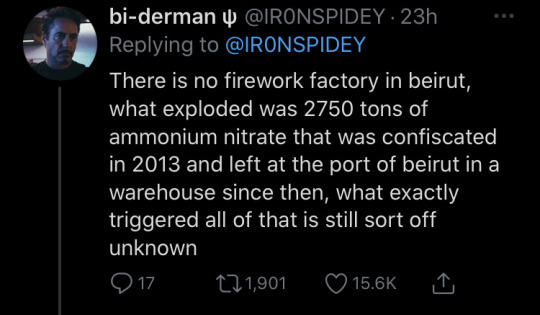

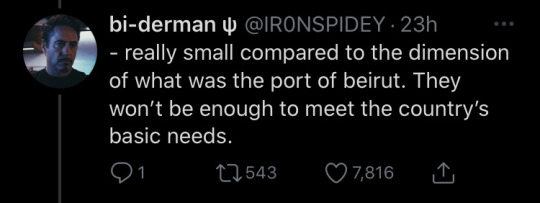

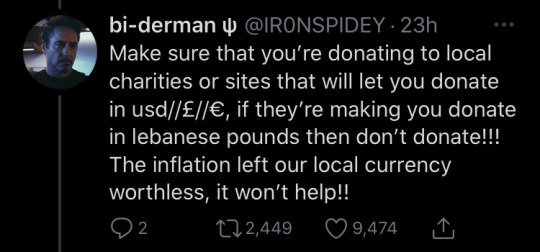



And here are some of the links they provided:
https://www.supportlrc.app/
https://www.gofundme.com/f/prevent-suicides-due-to-poverty-and-unemployment
https://www.gofundme.com/f/medical-relief-to-lebanon
https://www.gofundme.com/f/hope-for-lebanon
https://www.gofundme.com/f/lebanonneedsorg
http://www.caritas.org.lb/get_involved/donate
https://beitelbaraka.net/donation/pay/
https://gogetfunding.com/beirut-emergency-relief/
https://www.justgiving.com/crowdfunding/lebanon-relief
https://www.givingloop.org/offrejoie
https://www.gofundme.com/f/beirut-explosion-emergency-disaster-relief
99K notes
·
View notes
Photo

When the Nazi concentration camps were liberated by the Allies, it was a time of great jubilation for the tens of thousands of people incarcerated in them. But an often forgotten fact of this time is that prisoners who happened to be wearing the pink triangle (the Nazis’ way of marking and identifying homosexuals) were forced to serve out the rest of their sentence. This was due to a part of German law simply known as “Paragraph 175” which criminalized homosexuality. The law wasn’t repealed until 1969.
630K notes
·
View notes
Text
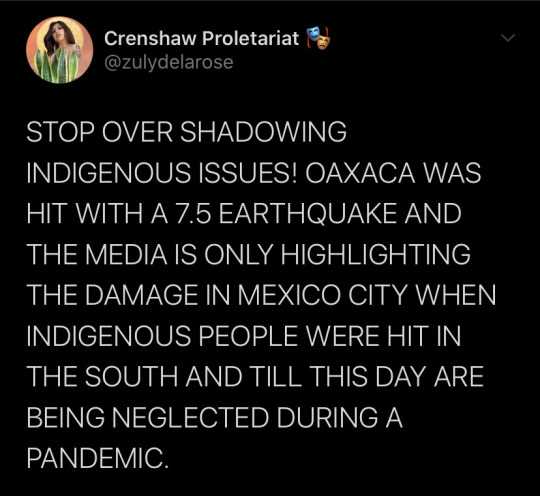
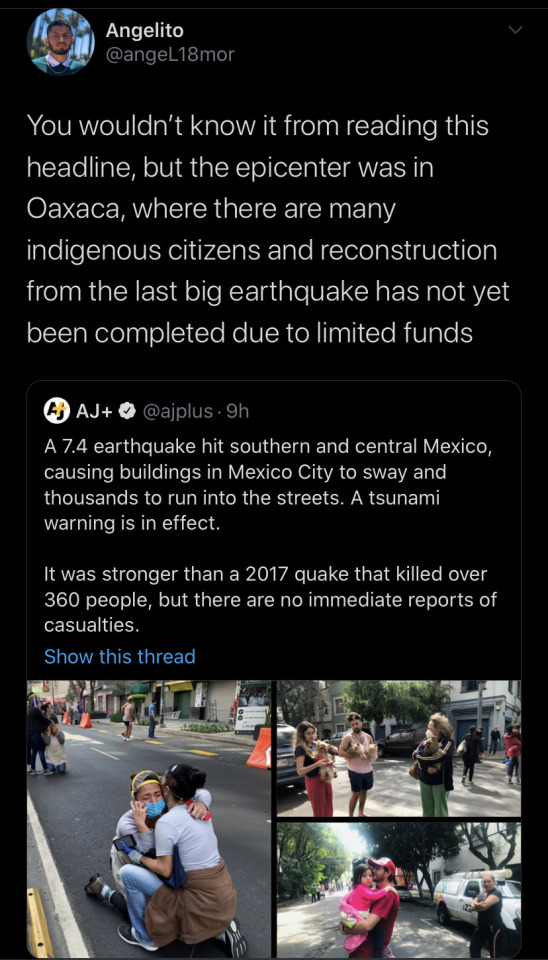


on 23 June a magnitude 7.5 earthquake hit Mexico with its epicenter in Oaxaca, where there is a predominant indigenous demographic. the majority of the damage occurred in indigenous pueblos that are still curently recovering from the devastating earthquake that happened 3 years ago. these same indigenous communities are also simultaneously experiencing displacement due to COVID 19 and lack of government aid. these are places that have the most vulnerability and need the most direct action and attention in recovery and aid.
post will be updated with donation links as they arise.
43K notes
·
View notes
Video
My kink is watching Jane Elliott expose white people’s racism and ignorance
34K notes
·
View notes
Text
YO HOLY SHIT THEY ANNOUNCED THEYRE GONNA DISBAND MINNEAPOLIS PD
https://twitter.com/ACLUMN/status/1269738051498106880?s=19

NOW FOR THE REST OF EM
73K notes
·
View notes
Text
Since I haven’t seen any mention of it yet, except on twitter, i’d also like to remind everyone that not only is June LGBT pride month, but it’s also Indigenous History month!
Please take the time to support, uplift and remember your Native, First Nations, Aboriginal and otherwise Indigenous friends and family. We are here, we exist! We have a long and winding history that deserves to be heard and respected! The word ‘Indigenous’ is so wonderful, and so expansive, and includes so many different cultures under its arms. Go out, learn about our histories and our cultures. Talk to the Indigenous people around you! We’re everywhere!
And not only that, but also be sure to give extra support to LGBT indigenous voices in this community. We are a minority that is scarcely acknowledged, and in desperate need of it. Too many times have I gotten strange looks for being so openly Native and so openly a lesbian. It’s as if that combination is impossible for people to understand. Support our content, buy from our stores! Or at least just include us!
I’d like to wish a happy LGBT pride month, and a happy Indigenous History month to everyone, but especially us LGBT Native folks. This really is our month to be open about ourselves, and I sure intend to. 💗🏳️🌈
107K notes
·
View notes
Text
Something I think we tend to tend to forget, when talking about closed religions, is to think about why they’re closed. Because there is ALWAYS a reason for it; no community just shuts itself off from others just because it feels like it.
Some religions are closed because they’re based on cultural values and beliefs that outsiders, who weren’t raised with and immersed in those beliefs, wouldn’t be able to ever truly understand. Brujería is an example of this, as far as I know.
Some religions are closed because they’re based on location, with their beliefs centered around local things that don’t make sense outside of that location. There are some small Shinto sects that are closed for this reason.
Some religions are closed based on race, because people of a specific race banded together under terrible circumstances and formed beliefs based on their shared experiences. Hoodoo, for example, was created by African slaves so it’s only open to Black people (mainly African diaspora).
Some religions are closed because you have to be born into them, usually because it’s part of the religion’s tenants and foundation. Modern Zoroastrianism almost never recognizes converts.
Some religions are closed because, historically, they were mistreated and often criminalized, with sacred practices being stolen and bastardized by outsiders who were allowed to witness them. Those religions ended up closing to outsiders in order to protect themselves and survive. This is why the majority of indigenous religions are closed.
It’s important to understand the reasons behind religions being closed, not only so that we can learn to accept that decision, but also so that we have a better understanding of history and other people.
13K notes
·
View notes
Photo

This is the Maiden of Llullaillaco, an Incredibly Well-Preserved Child Sacrifice from the Incan Empire around 500 years ago.
The Maiden of Llullaillaco, sacrificed at around the age of 15, was discovered with the other “Children of Llullaillaco” which includes a 6 year old girl and a 7 year old boy.
These mummies are so well preserved due to their position within a tomb atop a mountain within the extremely dry Atacama Desert. They are so well preserved, that their internal organs are intact, individual hairs on the arms can be seen and even one of the heart’s still contains frozen blood.
The deaths of the three children occurred by drugging the children with alcohol and coca, then placing them in the tomb where they eventually died in their sleep. This appears to have been a very well prepared process, as hair samples dictated that the children had extremely rich diets leading up to their deaths. The tombs were also adorned with elaborate dress and trinkets.
The boy however, faced a different death that could’ve indicated struggle or a different burial process. The boy was very tightly bound, and had dislocated hips and ribs and it appears he died under stress as the clothing contains both vomit and blood. Suffocation is the likely cause of his death due to the way he was bound.
8K notes
·
View notes
Photo

Ancient Egyptian Numbers
Relief depicting ancient Egyptian numbers, detail of a carving on the Pylon of Amenhotep III, Karnak Temple Complex.
283 notes
·
View notes
Photo
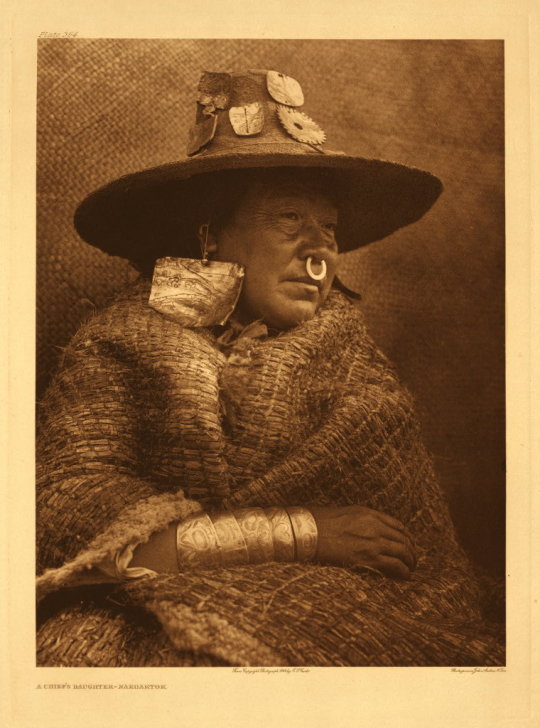
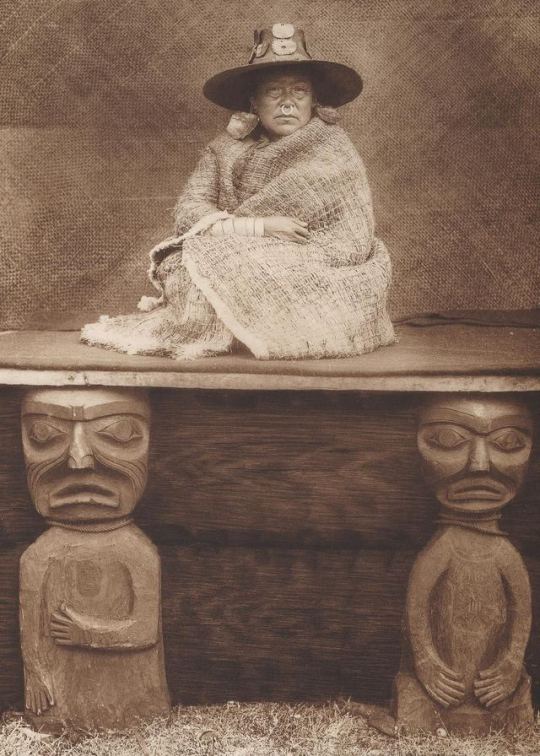
A chief’s daughter from the Nakoaktkok Nation.
Known in English as Francine, this woman was of the ʼNakʼwaxdaʼxw tribe of British Columbia, Canada, which was forcibly relocated from their native homeland in Ba’as (Blunden Harbour) in 1964. Presently, the ʼNakʼwaxdaʼxw have formed a banded government with the Gwa’sala, who were also forcibly removed by the Canadian government from the Smith Sound and Smith Inlet area. Together, they formed the Gwaʼsala-ʼNakwaxdaʼxw Nations, who have their main reserve at Tsulquate (Port Hardy). The two groups are part of the wider Kwakwakaʼwakw or Kwakiutl Indigenous peoples.
Photographed by Edward Curtis in 1914, the chief’s daughter is pictured here wearing a thick but soft cedar and wool blanket, abalone shell earrings, copper and abalone headpieces, a nose piercing made of bone, and inscribed metal bracelets. Abalone shell earrings are a sign of high social status among many Kwakwaka’wakw nations.
1K notes
·
View notes
Text
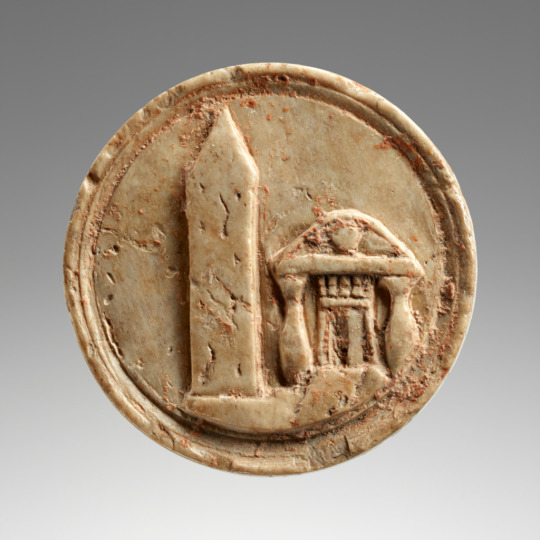

~ Token with an Egyptian Obelisk and a Temple.
Culture: Roman
Date: A.D. early 1st century
Medium: Ivory
466 notes
·
View notes
Text
i’m watching an art theft documentary and they’re interviewing this art history professor from new york who was asked to go with the fbi to authenticate a rubens that had been stolen but it was a sting operation so they had to pretend like they weren’t the fbi, that they were some private buyer about to pay $3.5 million for it, and the fbi was like “this is a VERY delicate operation because you never know how they will react to what you have to say so let the agent do all of the talking, don’t say a word to anyone just nod if it’s the rubens, the last operation we did the guy in your position got shot because things went wrong in a second” and then it cuts to the professor’s interview and he says “i wasn’t going to fly down to miami to be a part of an undercover fbi sting operation to handle what could be rubens’s aurora and just NOT say anything. i was gonna have to ad lib a little” and then he tells the interviewer that when he & the fbi agent got to the hotel while he was examining the painting he started lecturing the other people, first on how badly they had wrapped it, and then about like how it had been painted, the history of it, what the subject was and what she was doing, etc etc, and he was like “i hadn’t taught a class on rubens in 15 years, so for me it was like being back in the classroom except my students couldn’t leave”
340K notes
·
View notes
Photo








Historical Indigenous Women & Figures [3]:
Atotoztli ii: also known as “Huitzilxochtzin”, was a daughter of Emperor Moctezuma i, and wife of Emperor Tezozomoc. Sources say she ruled as regent, and may have ruled the Triple Alliance herself for as long as 30 years
Muriwai: Whakatōhea can trace their history back to her, who famously said “make me stand as a man” as she took the helm to pull the Mātaatua back to safety when were no men available to do so
Kenojuak Ashevak: Renowned Inuit artist, whose multiple artworks have been featured in numerous coins & stamps, as well as many art galleries and museums. She became the first Inuit to be inducted on Canada’s walk of fame, and was appointed as a Companion of the order of Canada
Pretty Nose: Arapaho war Chief who participated in the Battle of Little Big Horn
Zitkála-Šá: Yankton Dakota writer, editor, translator, musician, educator, and political activist. Her books brought Native American literature to mainstream culture, and she was the co-founder of the National Council of American Indians in 1926, and is noted as one of the most influencial people of the 20th Century
Gatûñ'lätï: Cherokee war hero who lived during the American Revolutionary war, and upon her husband’s death, she grabbed his tomahawk, screaming “kill! kill!” and encouraged the retreating Cherokee forces to rally, gaining their victory
Thanadelthur: A trilingual Guide and Interpretor for the Hudson’s Bay company, she was able to broker peace between Crees and Chipewyan peoples
Red Wing: Silent Era Winnebago Actress who starred in multiple films, she and her actor/director husband James Youngdeer were dubbed as a Native American Hollywood power couple
Part 1, part 2.
3K notes
·
View notes
Photo

Stele of Akhenaten and his family
Relief depicting king Amenhotep IV (Akhenaten), his wife Nefertiti and their children under rays of the sun god Aten, from Tell el-Amarna. New Kingdom, 18th Dynasty, ca.1353-1336 BC. Now in the Egyptian Museum, Cairo.
386 notes
·
View notes
Photo




Roman jewelry: a gold necklace (top) and gold bracelets, c. 1st - 4th century
3K notes
·
View notes


